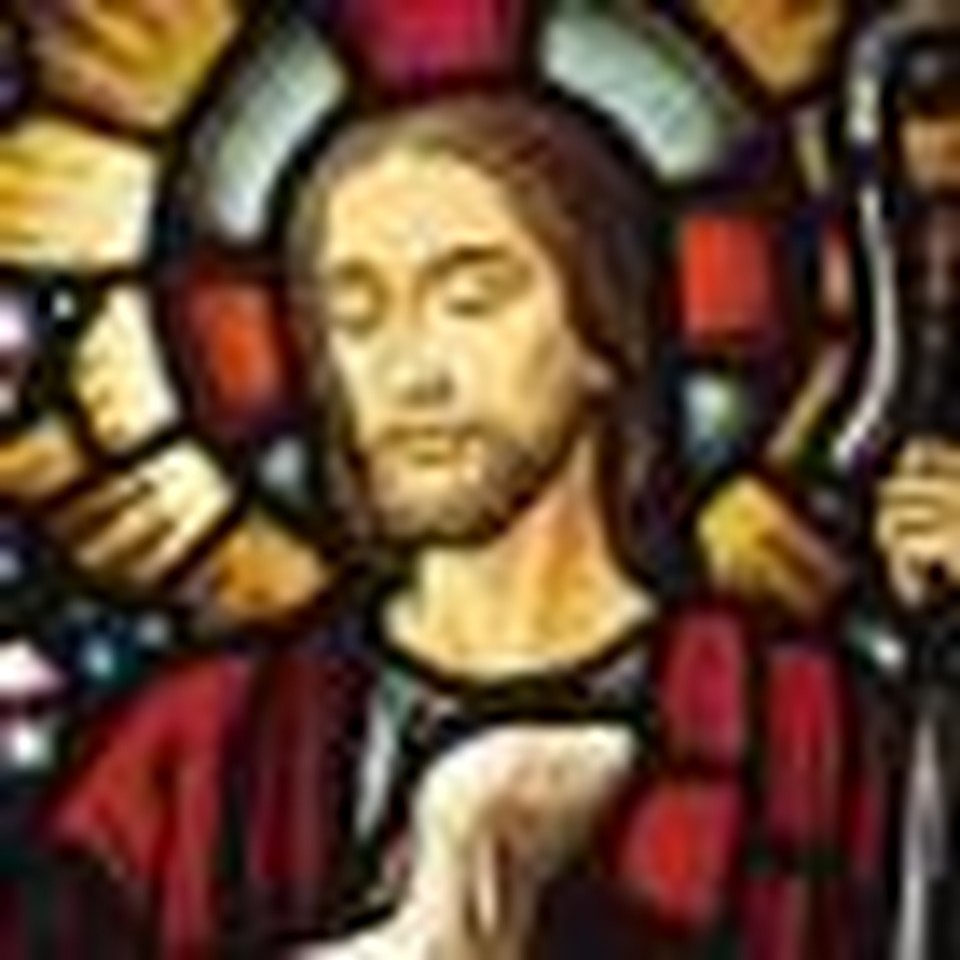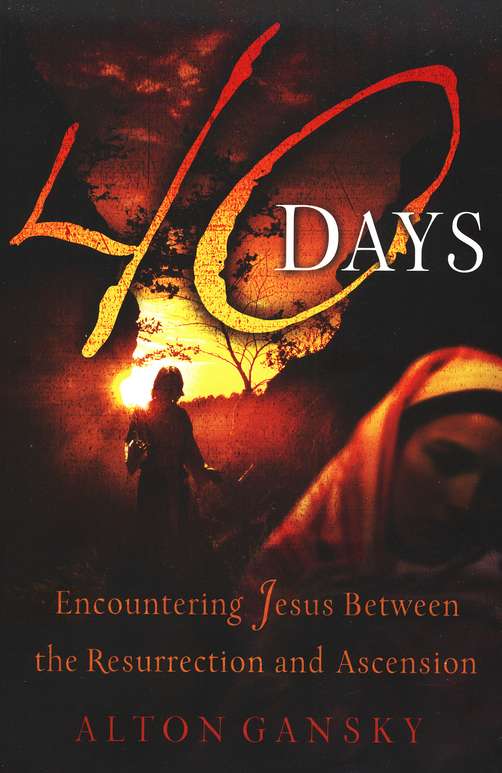Myths of the Resurrection

Let's face it. The Resurrection is hard to believe. After all, we're speaking of a man who endured horrible beating, cruel impalement, and heartbreaking death, then came back to life and appeared to scores of people. Doubt is understandable. But because something is hard to believe, it does not follow that it is false.
Early medical practitioners had trouble believing that creatures invisible to the eye could be responsible for infection and disease. In 1872, Pierre Pachet, professor of physiology at Toulouse said, "Louis Pasteur's theory of germs is ridiculous fiction." Today we call those germs bacteria and viruses.
Some things stretch the imagination too much. Tom Watson, chairman of IBM in 1943, said, "I think there is a world market for maybe five computers."
Naysayers abound, and the stories of their failed predictions are legendary. The Beatles were told guitar music was on the way out. Fred Smith was informed by his Yale University professor that his concept of overnight delivery was not feasible, but Federal Express was founded anyway. Alexander Graham Bell was told the telephone was impractical.
These are doubts about technology, society, and business, all of which pale in comparison with what people are asked to believe about the Resurrection. Still, the facts are there, and the Resurrection is beyond doubt to those who take the time to look at the evidence.
Yet, every few years someone publishes "proof" that the Resurrection never occurred. Most of these have the same credibility level as urban myths.
Doubters are not new; they can trace their philosophical lineage back to the first century. The apostle Paul addressed a batch of them in the Corinthian church:
Now if Christ is preached as raised from the dead, how can some of you say, "There is no resurrection of the dead"? But if there is no resurrection of the dead, then Christ has not been raised; and if Christ has not been raised, then our preaching is without foundation, and so is your faith. In addition, we are found to be false witnesses about God, because we have testified about God that He raised up Christ—whom He did not raise up if in fact the dead are not raised. For if the dead are not raised, Christ has not been raised. And if Christ has not been raised, your faith is worthless; you are still in your sins. Therefore those who have fallen asleep in Christ have also perished. If we have placed our hope in Christ for this life only, we should be pitied more than anyone. (1 Cor. 15:12-19)
The Resurrection and the appearances of Christ were the center of apostolic preaching. Christian preaching is an empty thing without the Resurrection. So those doubters in the Corinthian church had heard the message time and time again, yet it rubbed their sensibilities the wrong way. Some may have accepted the resurrection of Christ but denied that the Christian will also be resurrected at Christ's coming.
The problem rests in an assumption made then and often made today: Christianity can exist without the Resurrection. In other words, the Resurrection is dispensable.
Paul didn't think so. He ticked off a short list of what the faith loses if there was no Resurrection:
- Preaching is without foundation.
- Faith is without foundation.
- We become false witnesses about God.
- Our faith is worthless.
- We are still in our sins.
- Those who have fallen asleep in Christ (died) have perished.
- We are to be pitied.
Quite a list.
On a hill in Athens, Paul preached his short but famous unknown god sermon. As usual, he included the resurrection of Christ. The response? A few believed, but most ridiculed him (Acts 17:32). Ridicule is the first response of doubters. Nothing has changed.
Those that don't ridicule do their best to explain away the Resurrection. They offer ideas that are more "reasonable." Ironically, the ideas are so contrived and lacking in historical integrity as to be ridiculous.
Despite the shaky nature of the theories, many have caught on.
Mostly Dead Theory
The 1987 movie Princess Bride has what must be one of the funniest lines in the movie business. The hero has been taken to Miracle Max (played by Billy Crystal) to be healed of his injuries. The hero's friends are concerned that they are too late and ask if he is dead. Max studies the lifeless form for a few moments then answers, "Well, it just so happens that your friend here is only mostly dead. There's a big difference between mostly dead and all dead."1
Mostly dead? How can someone be only mostly dead? As ridiculous as it sounds, the most popular theory used to dispel the Resurrection can be called the mostly dead theory. Usually it goes by the more formal title the swoon theory.
The idea was propagated through Hugh Schonfield's 1965 book The Passover Plot. In the widely read work, Schonfield suggested that Jesus contrived to be arrested, planned to be crucified, and did so knowing that he would be taken down before the Sabbath. Instead of dying on the cross, Jesus merely swooned—he passed out. Once in the cool tomb, he revived and made his way out of the sepulchre.2
There are several variations of this theme. One is that Jesus, with the full knowledge and help of the disciples, staged the execution. Another proposes that Jesus was revived by a doctor hidden in the tomb.
Other variations exist, but all assume that Jesus did not die. This theory doesn't work for many obvious reasons. This concept is so faulty it is difficult to know where to begin.
First, the theory requires that Jesus lied about his intentions. Would Jesus have spent three years teaching a moralistic gospel and go to the cross for his beliefs if it all hinged on a lie? The notion is contrary to everything Jesus taught and to his nature as revealed in his life and the lives of his disciples.
This plot would also mean the disciples were participants or were so foolish they were repeatedly deceived before and after the Resurrection.
Not only would Jesus have had to be a grand conspirator for the Passover plot to work, but he would have had to pretend to die. He would have needed to become an actor on the cross.
Furthermore, it would be necessary for the Roman guards—men who specialized in crucifixion—to have taken Jesus down before he died. The biblical text shows the extent the soldiers went to, to make certain the two thieves died before sundown—they broke their legs, hastening death. Jesus, they determined, was already dead. It is doubtful that men who went to such extremes to make certain that those crucified with Christ died would be so sloppy as to overlook Jesus' condition.
We should remember that Jesus was pummeled with fists and rod, scourged with a whip, and forced to carry the crossbeam to Calvary, a task he couldn't finish. Then he was nailed through hands and feet and left to suffer on the cross for six hours, and finally stabbed in the side. If the swoon theory is to be believed, we must also believe that Jesus overcame all that and was strong enough to recover in the tomb, move the rock, and walk past the guards.
In the burial chapter we discussed two men: Nicodemus and Joseph of Arimathea. If Jesus were alive, these two men would have known it. They wrapped Jesus' body, making it improbable that such a severely wounded man could have freed himself without help.
The passover plot/swoon theory starts off weak and deteriorates from there.
Twins Theory
As difficult to accept as the plot/swoon theory is, what Robert Greg Cavin of Cypress College offers is even more ludicrous. He suggests that Jesus had a twin whom he calls Hurome. In a nutshell, Jesus and his twin were separated soon after birth. Hurome arrived in Jerusalem in time to see his twin brother Jesus crucified. It seemed a good idea to him to take Jesus' place as Messiah. He, therefore, stole the body and picked up where Jesus left off.
William Lane Craig of the Talbot School of Theology calls this the Dave theory after the movie. (In the movie Dave, a presidential look-alike is pressured into masquerading as the recently deceased president.)3
Why doesn't this work? First, it requires there was a twin in the first place. Nowhere in the biblical text, extrabiblical texts, or history is found the mention of Jesus' twin. It would be something Mary and Joseph might have noticed.
For this to have even a shred of credibility, the New Testament must be gutted of its historical testimony. The Gospels not only relate the account of the crucifixion and resurrection but the unique nature of Jesus' birth, his miracles, his teaching, and much more.
Not only must there have been a twin for this theory to work, but he had to be a unique individual; for he arrived in Jerusalem, saw the tortured, battered body of Christ with a placard over his head that read "King of the Jews," and then considered it prudent to pick up where Jesus left off. It seems unlikely someone seeing the horrific, garish image would think it wise to try the same thing.
This, and other theories, require that we dismiss Jesus' prophecies about his death and resurrection. Actually, we have to dismiss much of the Bible.
Further, this bizarre concoction demands the disciples were gullible enough to be fooled by a twin. As the father of twins, I can say that no matter how much twins look alike, they have readily discernible distinctions, especially adult twins. And if not gullible enough to be fooled, then the disciples would have to have been participants in a fraud—a fraud for which they all suffered imprisonment, beatings, and martyrdom.
Hurome would have to have been a very clever man, for he had to, as an imposter new to the scene, know how Jesus spoke and what he taught, including the use of catch phrases and "reminder acts," like the breaking of bread with the two Emmaus disciples.
He had to be more than clever; he had to be powerful to work the postresurrection miracles that so impressed the disciples: walking into a closed room, miraculous catch of fish, appearing and disappearing before witnesses.
Lastly, this concept requires that Jesus' twin ascended into heaven before a band of Jesus' witnesses.
Supporters of this theory would quickly say, "None of those miracles happened either." If that is their belief, wouldn't it be more academically and intellectually ethical to say so? Why concoct such a nonsensical, groundless theory? Why suggest that Jesus had a twin? If it is an attempt to explain away the appearances of Christ, why not just call those fabrications as well?
Big Cover-Up Theory
We love a good conspiracy tale, so it's not unusual that some folk believe the Resurrection is nothing more than a fine-tuned fabrication—fiction contrived for personal gain.
The story goes like this: After Jesus' death and burial, the disciples got together and devised a scheme that would make the world think that Jesus rose from the dead as he said he would.
Thinking that the last three years of ministry were better than fishing or tax collecting, they conspired to keep things going. They stole the body and buried it elsewhere, then told people they'd seen Jesus alive again and witnessed him rise into heaven forty days later. Now they're the leaders, and the fame that had been Jesus' would now be theirs.
This doesn't work either. If this theory were true, it must be the dumbest idea in history. It is hard to imagine the disciples saying, "Let's start an organization that will infuriate our Jewish brethren and irritate the Romans." They had just witnessed what happened to Jesus. Why would they want to take the same abuse for something that wasn't true?
Again, it would require the disciples—every one of them—to be liars. It also means these men were ready to die for a lie. It lacks a reasonable motivation, and the price would far outweigh the personal gains.
Men and women will die for the truth, but very few will willingly suffer for something they know to be a lie. Even if we can stretch our imaginations enough to believe several disciples would condescend to perpetrate such a fraud, it is impossible to believe all of them would participate.
This is the earliest of the Resurrection debunking theories. Matthew shows us its origins: "As they were on their way, some of the guard came into the city and reported to the chief priests everything that had happened. After the priests had assembled with the elders and agreed on a plan, they gave the soldiers a large sum of money and told them, ‘Say this, "His disciples came during the night and stole Him while we were sleeping." If this reaches the governor's ears, we will deal with him and keep you out of trouble.' So they took the money and did as they were instructed. And this story has been spread among Jewish people to this day" (Matt. 28:11-15).
That contrived concept would spread worldwide and last through the centuries.
The Gullible Gentlemen of Galilee
A favorite way to attack the Resurrection is to attack the witnesses in general and the disciples specifically. One popular theory is that the disciples were the victims of mass hypnosis. So eager were they to believe that Jesus would rise as he said he would, they began—as a group—to "see" him.
A variation of this idea suggests that Jesus selected people who had highly suggestible personalities whose imaginations would lead them to see things, hear things, and touch things that were not there.
As with the previous theories, this one has problems. First, while it might be possible to trick a group of people once or twice, it would be difficult to do so repeatedly over a period of forty days.
The disciples not only saw Jesus, they touched him, ate with him, and listened to him. Some of these sightings involved groups like the women, the disciples, the five hundred, but others were one on one (Mary Magdalene, Peter, and James).
The appearances of Christ occur at different times in the day, in different locales (from Jerusalem to Galilee), and with a varying mix of people. One can imagine a mass hallucination, but a dozen is beyond the boundaries of credibility.
Full Confidence
Two millennia after the event, contemporary Christians can state their belief in the resurrection and postresurrection appearances of Christ without bowing their heads in shame. No argument exists that has put the smallest dent in the armor of truth.
The Resurrection and appearances are reasonable—the result of reason. While there are those who wish to cast the believer as a gullible supporter of myths, the evidence shows otherwise. The ridiculous theories put forth to explain away the Resurrection are easily seen for what they are: desperate attempts to avoid the supernatural intervention of God.
The Resurrection is a historical fact replete with eyewitnesses. The fact that the church meets on Sunday is just one piece of evidence the early believers took the Resurrection literally.
There will always be critics. Detractors plagued Jesus during his ministry and the disciples in the early church and will continue to do so until Jesus returns.
The Resurrection requires an ability to believe in the supernatural work of God. For those who dismiss such things, no amount of evidence or logic will serve as proof.
While we should show patience with those who have doubts—remember, the Resurrection is a difficult concept—we need not be embarrassed by the biblical account.

Originally published April 10, 2011.







